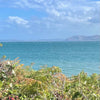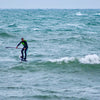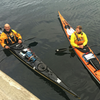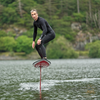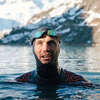Essential Safety and Rescue Equipment for Coastal Journeys
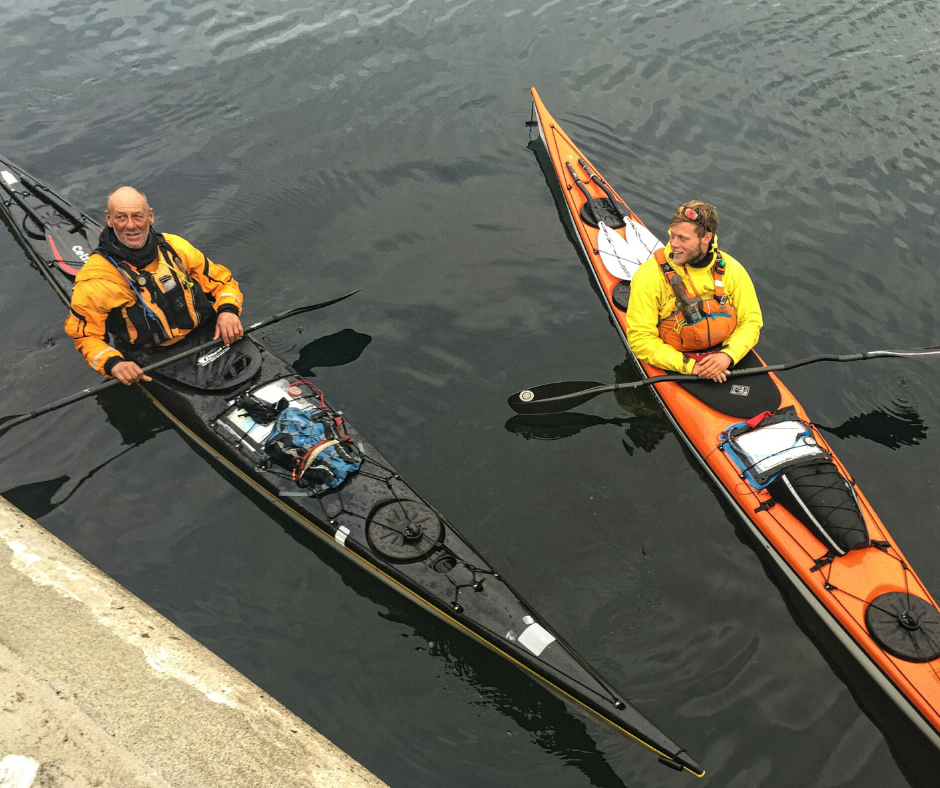

Introduction
Sea kayaking and coastal stand-up paddle boarding (SUP) offer exciting opportunities to explore our beautiful coastal landscapes, encounter marine life, and enjoy nature. However, these activities also come with inherent risks, especially when paddling in open tidal waters. To ensure your safety, it's crucial to be well-prepared with the appropriate equipment. In this blog post, we'll explore the essential gear that sea kayakers and coastal SUP paddlers need to stay safe at sea. While this is a comprehensive list, there will definitely be a few items we haven't covered. Leave a comment below with an item you never leave behind when you head out.
Lets dive in:

Personal Flotation Device (PFD)
A Personal Flotation Device (PFD), either a buoyancy aid or life jacket, is the most critical piece of safety equipment for any water-based activity. Make sure to choose a PFD designed for paddling, as it offers more freedom of movement for your arms. Ensure that it fits snugly and comfortably and provides adequate buoyancy. In an emergency, your PFD can save your life. The info graphic above shows some of the PFDs we stock.
Sea Specific = Lots of pockets, a drinks bladder area and usually (not always) a front zip closure for ease of adjusting layering underneath. We recommend the "Explorer Zip"
Belt Mounted Life Jacket = This one stows away in a bum bag and is inflated by puling a toggle. This is "Air Belt" from Red is an emergency only life jacket and is good as a back up for paddle boarders. Not suitable for sea kayaking.
General Purpose = As the name would suggest these types of buoyancy aids can be used for different disciplines and purposes. we usually recommend a white water style PFD like the "Peak Ps River Vest" as it covers more bases.

SUP Leash
A leash is a must-have for SUP paddlers. It attaches to your ankle and keeps your board close in case you fall off. This prevents your board from drifting away on breezy days, making it easier to self rescue and maintain control in challenging conditions. There are a few different types but the most common tend to be "Coiled" for flat and moving water and "Straight" for use in the surf. As a general rule of thumb, if you are in the surf a leash should be worn around the ankle. In more dynamic environments a waist mounted leash system is better as its easier to release.

Get attention with a whistle
A whistle is a simple yet essential safety device for signalling distress. In case you get into trouble, a whistle's sharp sound can alert nearby boats or fellow paddlers, increasing your chances of being noticed and assisted. It's quite common for touring and sea kayak buoyancy aids to have a built in whistle. Usually found in the shoulder strap area.

Communication Devices
A waterproof communication device, such as a VHF (Very High Frequency) radio or a mobile phone waterproof case, is really important for staying in touch with others and calling for help if needed. Be sure to keep it within reach, but protected from the elements. Some VHFs are waterproof but others aren't so it's always worth checking. To use a VHF properly it's recommended to have completed a VHF course.

Navigation Aids
Navigational equipment, like a marine compass, a hand held GPS device, navigation charts or OS maps are useful for keeping your bearings and ensuring you don't get lost at sea. Knowing your location and the direction you're heading is crucial for trip planning. It's al well and good having this equipment but its worth practicing the skills. Potentially enrolling in a Coastal Navigation and Tidal Planning (CNTP) course to help you truly understand how to use them. Have a read of Part 1 of our Coastal Navigation series here.

Flares
Carrying marine flares is important for signalling for help in emergency situations. These bright, visible signals are particularly useful when you're far from shore and need to attract attention. There are lots of variations of flares. Having a combination of daytime and night time visible flares is always good. Just in case.
First Aid Kit
No image for this one as its pretty obvious. A compact first aid kit in a sturdy waterproof dry bag is a must. It should include basic supplies like bandages, antiseptic wipes, and any personal medications you might need. You never know when you or someone in your group might require medical assistance.

Towline
A towline, also known as a sea kayak tow rope, is a valuable tool for assisting other paddlers in distress. It can be used to tow a struggling paddler or to establish a stable connection between two vessels in choppy waters. Worn around the waist, it bust have a quick release capability and ideally be made from floating rope. For sea kayaking an 15m is the standard length as it gives lots of room between the tower and casualty.
Pro Tip - When clipping a towline to a deck line, clip in the opposite way to the image above. Clip so the gate is facing skyward. This means there is less chance of it unclipping by accident.

Bilge Pump
A bilge pump is a handy tool for sea kayakers to remove excess water from the cockpit, especially after capsizing. This helps to get the last few drops out of the boat and stops any sloshing. Its also a great water cannon! Get one that floats and is highly visible, like the Palm "Kayak Pump".

Deck Bag or Dry Bag
Storing essential items like your communication device, first aid kit, and navigation tools in waterproof deck bags or dry bags is essential. These bags keep your gear easily accessible. Not all deck bags are waterproof so chuck anything important in a dry bag first.
Conclusion
When embarking on sea kayaking or coastal SUP paddling adventures, safety should be a top priority. The right safety and rescue equipment can mean the difference between a memorable outing and potential disaster. Being prepared with the essential gear discussed in this blog post will not only keep you safe but also allow you to enjoy the beauty and remoteness of the sea with peace of mind.
Remember to always familiarise yourself with the area and weather conditions, and consider taking a safety and rescue course to enhance your skills and knowledge for a safer and more enjoyable experience on the water.
Most importantly, never paddle alone.
-
Posted in
coastal navigation series, flotation device, isup, kayaking, paddleboard, paddleboarding, peak ps, red original, red paddle co, seakayaking, touring, uk, uk coastguard, whistle
